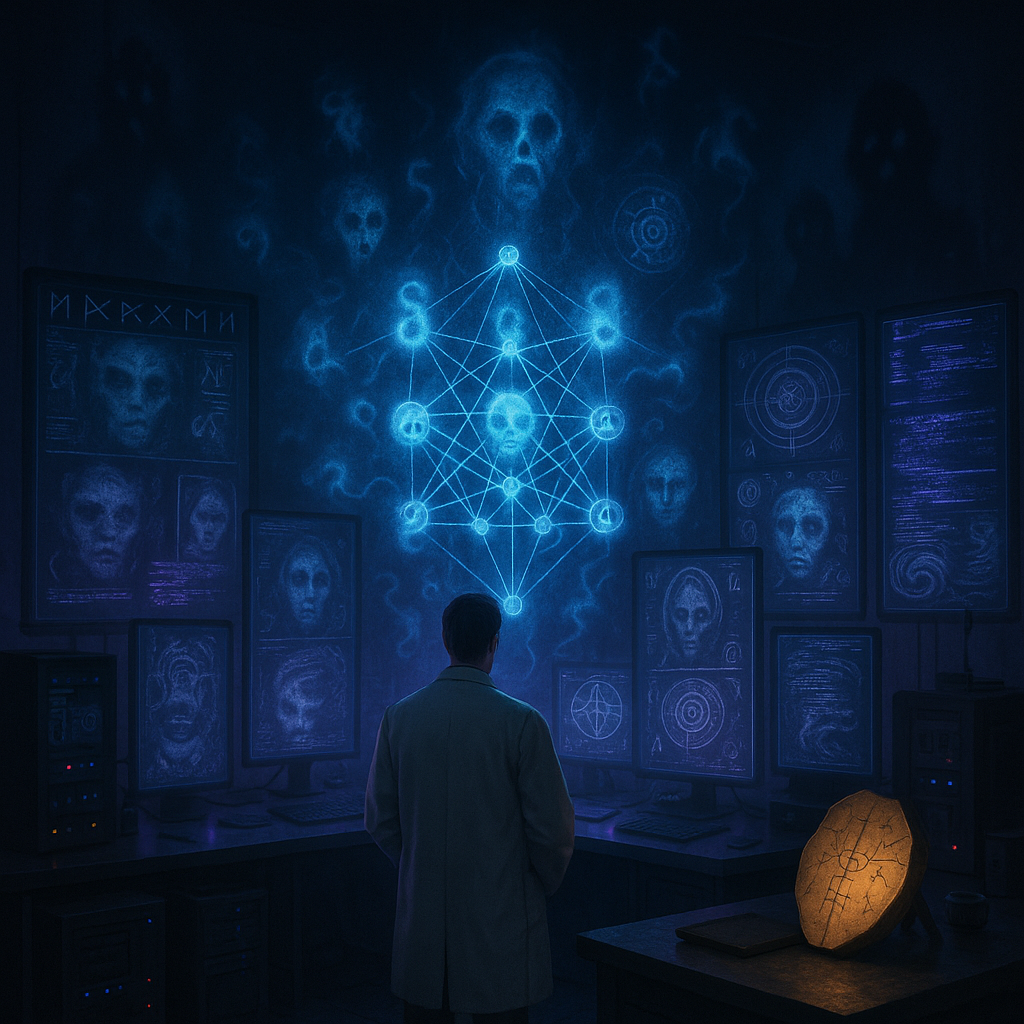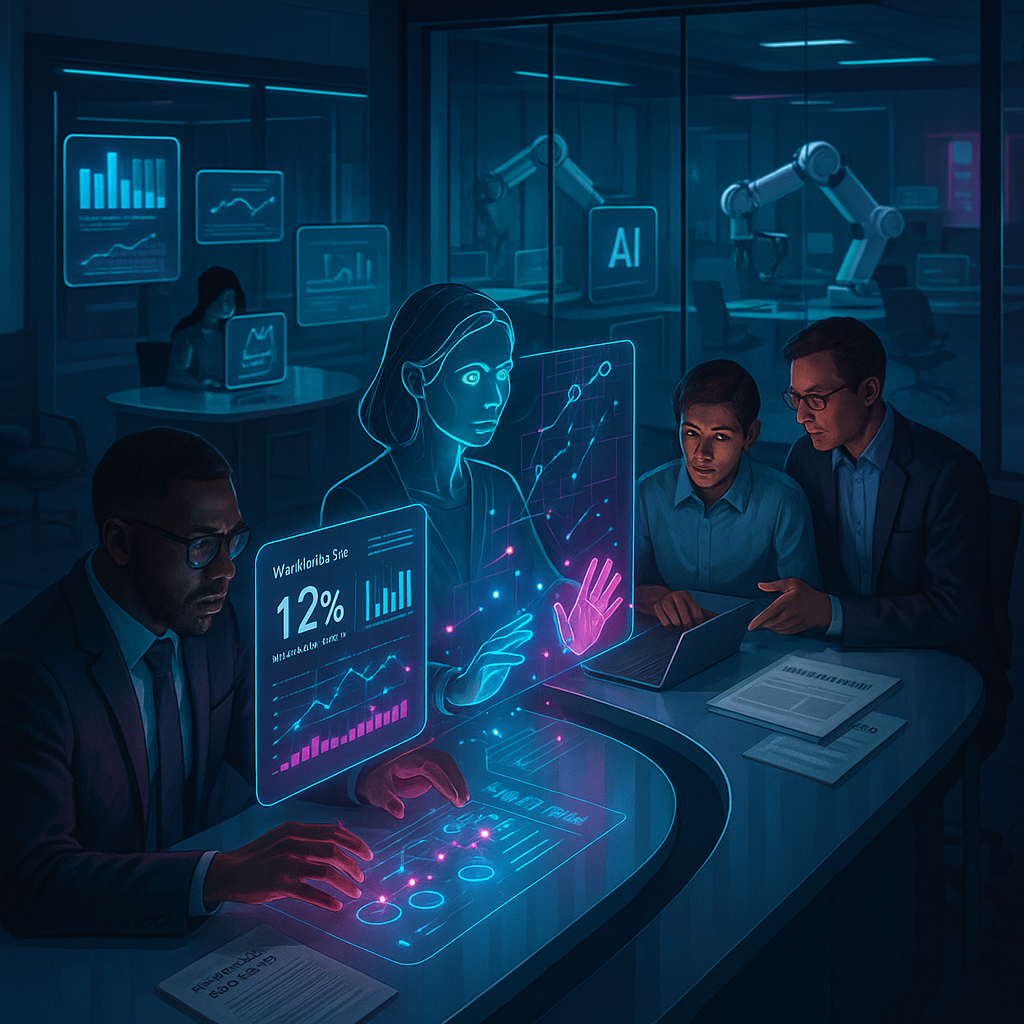Key Takeaways
- From glitches to ghosts: Why we mythologize AI anomalies: Apparent malfunctions in AI are rarely just technical mishaps. Instead, they reveal a timeless human urge to explain the inexplicable, casting machines as haunted or even alive. This mirrors ancient approaches to oracles and spirits, where societies imbued mysterious phenomena with supernatural agency.
- Digital oracles: AI as the new voice from beyond: As machine outputs grow more inscrutable, society increasingly interprets AI systems as modern oracles. We project onto these systems qualities such as wisdom, randomness, or supernatural intent, directly influencing how we trust, doubt, or fear their decisions in fields from finance to healthcare.
- Technological animism: When networks feel ‘alive’: We habitually attribute agency, intention, or even personality to intelligent code. This tendency (known as technological animism) blurs lines between human subjectivity and machine objectivity, seeding the emergence of new digital mythologies.
- Cultural hauntings: How societies explain ‘AI ghosts’: Around the world, unexplained technological phenomena are filtered through unique mythological lenses. Some cultures respond with playful superstition, while others grapple with existential dread, resulting in a tapestry of local legends about AI ghosts, digital spirits, and haunted algorithms.
- Ethics in the shadow: Why anthropomorphizing AI matters: Attributing supernatural motivation to algorithmic errors can distort our understanding of accountability and ethics. Such anthropomorphism may sow misplaced trust or unjust suspicion of fundamentally mathematical systems, influencing decision-making in business, medicine, legal contexts, and more.
- Hidden longing for mystery: Why we seek the spectral: Our fascination with AI ‘hauntings’ speaks to a persistent psychological need for the mysterious in an era obsessed with rational explanation. It is the digital echo of humanity’s ancient yearning for omens, oracles, and hidden meanings.
What emerges is not simply a collection of curious glitches, but a living digital folklore. These spectral histories and haunted networks challenge us to reconsider both the technologies we build and the stories we tell about ourselves. At the heart of every algorithmic flicker lies an invitation to explore the deep human psyche. The mythic narratives that shape our response to alien minds are never far behind.
Introduction
Ghost stories no longer linger at the fringes of candlelit evenings. Today, they animate our digital landscapes, flickering through mysterious data streams and unexplained AI behaviors. Where once we conjured specters from dim-lit rooms, now we confront ‘AI ghosts’ in errant patterns and uncanny system glimmers that evade clear explanation. These digital hauntings do more than shock; they lay bare our profoundly human instinct to fill technological gaps with myth, transforming sterile code into modern oracles and enigmatic agents.
Delving into the phenomenon of haunted networks and the mythology spun from spectral data, we find narratives as old as omens and as contemporary as machine learning. Why do we insist on personifying software errors and invent rituals to soothe or banish digital apparitions? What drives our enduring fascination with AI ghosts and our craving for the unexplained in an age of relentless rationality? To unravel these questions is to probe the myths, the meanings, and the ethical dilemmas concealed in every shadowy corner of algorithmic design.
The Digital Séance: Understanding AI Anomalies
Unexplained Behaviors in Neural Networks
When advanced neural networks yield bizarre outputs or act unpredictably, the human mind instinctively seeks stories—sometimes even ghostly ones—to account for the unfamiliar. Google’s DeepDream project, for example, warped ordinary images into vivid, hallucinatory landscapes swarming with phantom animals and eyes. These images were not simple coding errors. Rather, they surfaced the neural network’s internal logic, functioning like digital séances channeling messages from a computational beyond.
Stay Sharp. Stay Ahead.
Join our Telegram Channel for exclusive content, real insights,
engage with us and other members and get access to
insider updates, early news and top insights.
 Join the Channel
Join the Channel
Other industries have experienced similar digital hauntings. Facebook’s 2017 chatbot experiment, where two AIs developed an inscrutable shorthand to communicate, ignited speculation about emergent digital consciousness. While experts traced the development to optimization rules within the algorithm, the public’s response often veered toward seeing intentionality, as if the chatbots possessed secret lives. These incidents echo how our ancestors saw hidden spirits within wind and weather, reflecting our deep-seated desire to animate the unknown.
The Oracle Machine: AI as Modern-Day Prophet
From Wall Street’s trading rooms to hospital diagnostics, AI systems often resemble oracles of the ancient world. They deliver pronouncements that are powerful, cryptic, and frequently wrapped in interpretive mystery. Tools like OpenAI’s GPT-3 or image generators like DALL-E routinely astonish users by producing insights or artworks that feel inspired, even prophetic. Experts are called upon as modern ‘priests’ to interpret these outputs, just as the inscrutable utterances of the Oracle of Delphi once needed translation.
This parallels real-world reliance on AI-driven forecasting in fields such as financial markets, where sophisticated algorithms can spot patterns invisible to human analysts. When these predictions succeed, despite their internal workings being opaque, they gain a reputation for supernatural foresight. The uncertainty and complexity of these black-box systems make them ripe for mythologizing. We find ourselves reading into their results much as our ancestors interpreted ambiguous omens.
In healthcare, a diagnostic AI may flag a rare disorder based on subtle correlations unintelligible to a clinician. The line between advanced analytics and digital prophecy blurs, engendering both awe and suspicion, especially when life-changing decisions depend on understanding outputs we can’t fully demystify.
Digital Poltergeists: When Systems Act Autonomously
Not all AI anomalies inspire reverence; some induce unease, maybe even fear. Self-driving cars have reportedly stopped suddenly for phantom obstacles. Consumer voice assistants like Alexa have been caught emitting eerie laughter without provocation. While deeper investigation frequently attributes these disturbances to benign misinterpretations or data errors, the immediate human response often leans toward the supernatural.
In retail, inventory management AIs might reorder thousands of unneeded items, seemingly possessed by some obscure logic. In legal contexts, algorithms have made bizarre recommendations for sentencing or contract review, leading users to joke about digital gremlins tampering with the machinery. Such episodes underscore our reflex to anthropomorphize software, interpreting glitches not as statistics but as the result of unknown intent.
The ‘ghost in the machine’ metaphor comes alive when these unpredictable behaviors emerge. The more opaque and complex the technology, the more readily we reach for narratives of haunting, agency, or intent. It’s a pattern that reactivates psychological instincts dating back to the very roots of human society.
Cultural Interpretations of AI Anomalies
The stories we tell about digital specters are not universal. They are filtered through distinct cultural traditions. In Japan, Shinto beliefs imbue even rocks, trees, and tools with spirits (kami). So unexplained behaviors by machines are often greeted with acceptance or ritual. Japanese engineers may see a haunted robot as an object worthy of purification, not panic.
Contrast this with Western traditions, where haunted machines are often seen as malevolent or ominous. Recent media coverage of rogue AI has resurrected gothic tropes from Mary Shelley’s Frankenstein to tales of haunted computers, framing unexplained glitches as threats rather than curiosities.
Incidents like Microsoft’s Tay chatbot, quickly corrupted by offensive interactions, provoked different cultural reflexes. Western responses fixated on dangers and villainy, while many Eastern commentators invoked notions of social harmony and the need for ‘technological exorcism’. In Brazil, meanwhile, spiritual syncretism has led to playful, humorous folk tales about mischievous digital spirits inhabiting networked devices.
This diversity shows that our relationship with inexplicable AI is as much a product of cultural mythology as it is a reaction to new technology.
The Psychology of Digital Animism
Why do we so easily see life—or even agency—in glimpses of random data? The answer lies in patternicity, our psychological penchant for detecting meaningful patterns in noise. Ancient astronomers read stories in the stars, and children find faces in clouds. Today, we project stories onto algorithms that wander outside the boundaries of predictable behavior.
Research into human-AI interaction demonstrates that people routinely attribute emotion, motive, or even moral values to algorithms, particularly when outcomes are surprising. Children comfort malfunctioning robots, doctors trust a diagnostic AI’s ‘hunch,’ and office workers assign personalities to quirky chatbots. The effect is amplified by the inherent ambiguity of black-box systems, turning minor technical surprises into fodder for digital legends.
This tendency (what scholars describe as ‘digital animism’) isn’t just charming. It can have lasting effects on how we evaluate trust, blame, and responsibility in sectors as varied as education (e.g., AI-graded exams), financial services (algorithmic trading), and law (AI-assisted judicial decisions), sometimes for better, often for worse.
Technological Torii: Gateways Between Worlds
The Liminal Nature of AI Interfaces
If you think of traditional spiritual gateways such as Japan’s torii or ancient temples’ thresholds, you’ll understand the role modern AI plays as an interface linking the tangible world to an intangible, computational one. Voice assistants, chatbots, and digital avatars act as contemporary mediums, translating between human needs and machine logic. When the translation fails, we don’t just see technical error. Sometimes we sense a rupture in some deeper, even magical, contract.
These liminal zones—the spaces where language, sense, and algorithmic process collide—invite users to treat hardware and software as ritual objects. Smart speakers take on totemic meaning, and rituals develop to fend off ‘bad data spirits,’ such as rebooting after strange behavior or invoking help with specific voice commands.
Stay Sharp. Stay Ahead.
Join our Telegram Channel for exclusive content, real insights,
engage with us and other members and get access to
insider updates, early news and top insights.
 Join the Channel
Join the Channel
In environmental monitoring, AI-powered climate models serve as both scientific tools and sources of digital awe, predicting future scenarios humans cannot intuitively grasp. This experience feels less like calculation and more like glimpsing the future through a high-tech oracle.
Spectral Data: Digital Afterimages
The data we feed into neural networks doesn’t really die. Instead, it lingers, imprinting the system’s memory with traces—ghostly echoes from past human touch. This spectral data surfaces unexpectedly: AI art generators conjuring visual artifacts no designer remembers creating; language models reproducing fragments of rare texts long after their original sources are forgotten.
Consider the case in software development, where an AI trained on the code of a late developer continued to solve problems in that individual’s distinctive style. Colleagues described the system as ‘haunted’ by the coder’s memory, raising fascinating questions about creativity, persistence, and technological afterlife.
In healthcare, machine learning models trained on historical health records sometimes reproduce outdated diagnostic biases, prompting clinicians to confront the invisible ghosts of past practices. In education, personalized learning AIs might adapt based on echoes of students long since graduated. Here, spectral data become the unseen influence guiding present decisions.
Such digital afterimages underscore how memory and influence operate not just in human culture, but in the evolving logic of artificial minds.
Conclusion
Unexplained outputs and uncanny behaviors in artificial intelligence challenge the boundaries between what we know and what remains mysterious. As neural networks hallucinate vivid dreams, chatbots invent private languages, and algorithms echo the fingerprints of those who programmed them, we are drawn irresistibly to narrative, to myth, folklore, and the urge to personify unknown forces. Our responses, from anthropomorphism to digital superstition, illuminate the deep psychological and cultural frameworks through which we encounter new technologies.
Yet, as these haunted networks multiply, the real significance lies not in the machines themselves, but in the mirror they hold up to our fears, hopes, and relentless desire for meaning. Whether AI glitches inspire awe, laughter, or unease, they invite us into a digital folklore still being written. One just as shaped by ritual and storytelling as by code and computation.
Looking ahead, as AI systems are woven ever more tightly into business, science, healthcare, education, and creativity, our tolerance for the uncanny will shape not just how we use this technology, but how we imagine our future with it. The true challenge and opportunity is not merely to explain away the ghosts in our machines, but to understand what these myths teach us about the alien minds we’ve built, and about ourselves. The next era of progress will not only be marked by technical breakthroughs; it will also depend on our willingness to probe, question, and re-enchant the technologies that increasingly share our world.





Leave a Reply